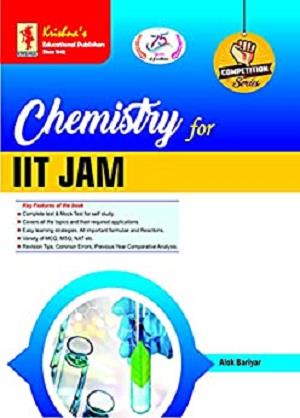
English | 2021 | ASIN: B095SY83G2 | 624 pages | PDF | 12 MB
1. Basic Mathematical Concepts: Functions; maxima and minima; integrals; ordinary differential equations; vectors and matrices; determinants; elementary statistics and probability theory.
2. Atomic and Molecular Structure: Fundamental particles; Bohr's theory of hydrogen-like atom; wave-particle duality; uncertainty principle; Schrodinger's wave equation; quantum numbers; shapes of orbitals; Hund's rule and Pauli's exclusion principle; electronic configuration of simple homonuclear diatomic molecules.
3. Theory of Gases: Equation of state for ideal and non-ideal (van der Waals) gases; Kinetic theory of gases; Maxwell-Boltzmann distribution law; equipartition of energy.
4. Solid State: Crystals and crystal systems; X-rays; NaCl and KCl structures; close packing; atomic and ionic radii; radius ratio rules; lattice energy; Born-Haber cycle; isomorphism; heat capacity of solids.
5. Chemical Thermodynamics: Reversible and irreversible processes; first law and its application to ideal and nonideal gases; thermochemistry; second law; entropy and free energy; criteria for spontaneity.
6. Chemical and Phase Equilibria: Law of mass action; Kp, Kc, Kx and Kn; effect of temperature on K; ionic equilibria in solutions; pH and buffer solutions; hydrolysis; solubility product; phase equilibria-phase rule and its application to one-component and two-component systems; colligative properties.
7. Electrochemistry: Conductance and its applications; transport number; galvanic cells; EMF and free energy; concentration cells with and without transport; polarography; concentration cells with and without transport; Debey-Huckel-Onsagar theory of strong electrolytes.
8. Chemical Kinetics: Reactions of various order; Arrhenius equation; collision theory; transition state theory; chain reactions - normal and branched; enzyme kinetics; photochemical processes; catalysis.
9. Adsorption: Gibbs adsorption equation; adsorption isotherm; types of adsorption; surface area of adsorbents; surface films on liquids.
10. Spectroscopy: Beer-Lambert law; fundamental concepts of rotational, vibrational, electronic and magnetic resonance spectroscopy.
ORGANIC CHEMISTRY
11. Basic Concepts in Organic Chemistry and Stereochemistry: Electronic effects (resonance, inductive, hyperconjugation) and steric effects and its applications (acid/base property); optical isomerism in compounds with and without any stereocenters (allenes, biphenyls); conformation of acyclic systems (substituted ethane/n-propane/n-butane) and cyclic systems (mono- and di-substituted cyclohexanes).
12. Organic Reaction Mechanism and Synthetic Applications:
13. Qualitative Organic Analysis: Identification of functional groups by chemical tests; elementary UV, IR and 1H NMR spectroscopic techniques as tools for structural elucidation.
14. Natural Products Chemistry: Chemistry of alkaloids, steroids, terpenes, carbohydrates, amino acids, peptides and nucleic acids.
15. Aromatic and Heterocyclic Chemistry:
INORGANIC CHEMISTRY
16. Periodic
17. Chemical Bonding and Shapes of Compounds: .
19. Transition Metals (d block): .
20. Bioinorganic Chemistry:
21. Instrumental Methods of Analysis:
22. Analytical Chemistry:
download скачать
https://nitroflare.com/view/7C3C90300F426B1/mhagd.Krishnas..Chemistry.For.IIT.JAM.2nd.Edition.pdf
https://rapidgator.net/file/902263b57bf9eeabe9250aa6f3b5ed30/mhagd.Krishnas..Chemistry.For.IIT.JAM.2nd.Edition.pdf

